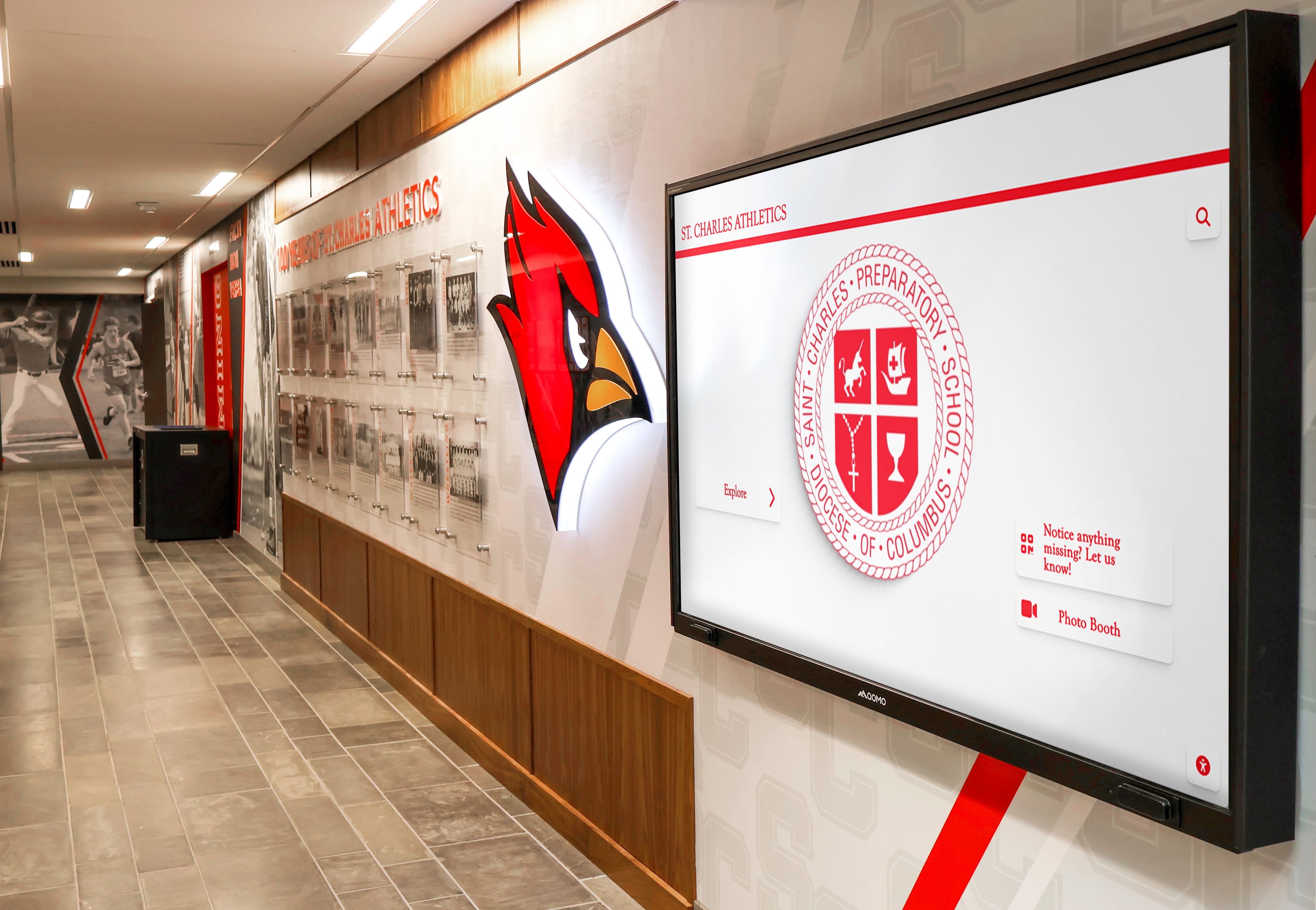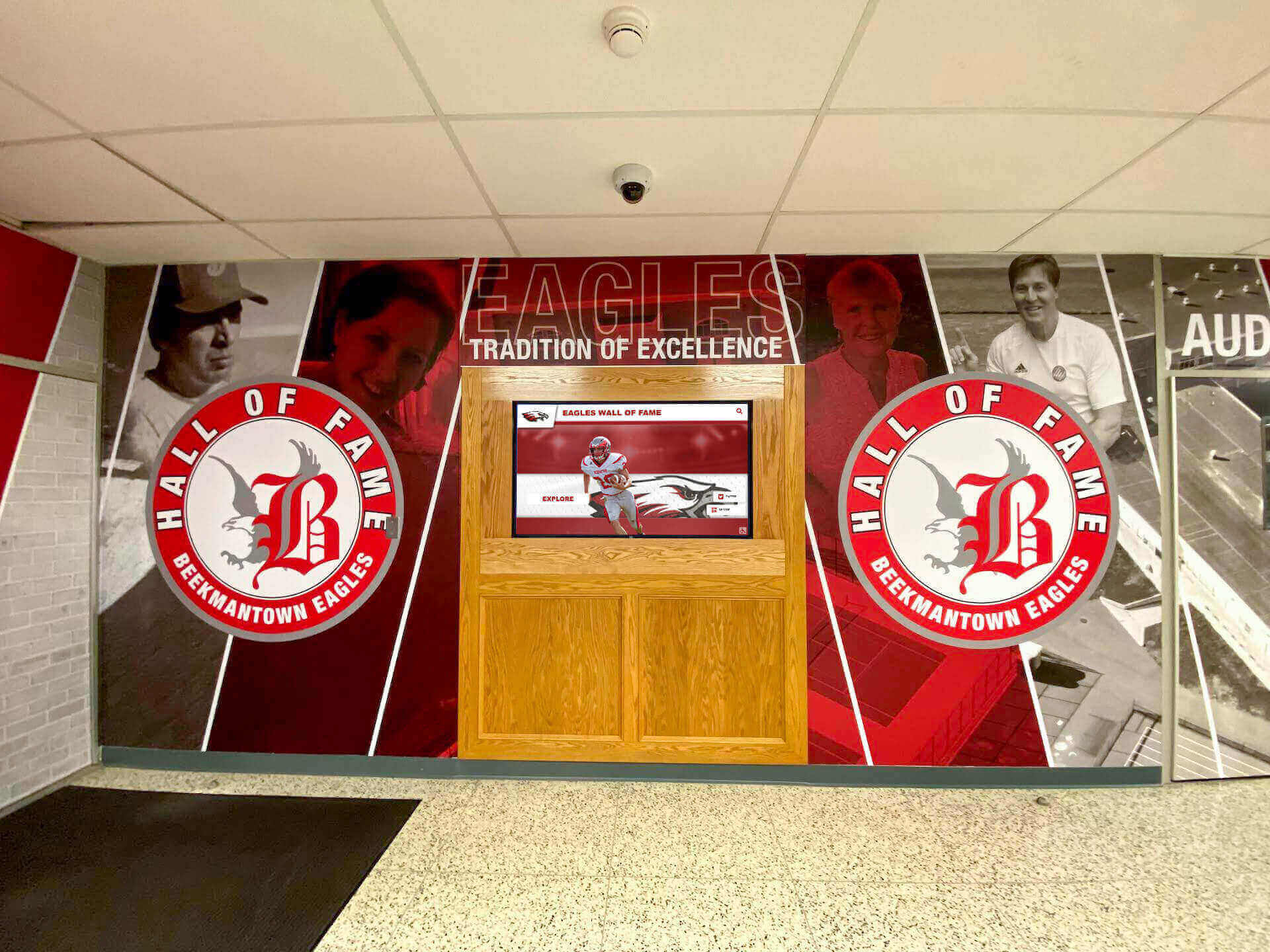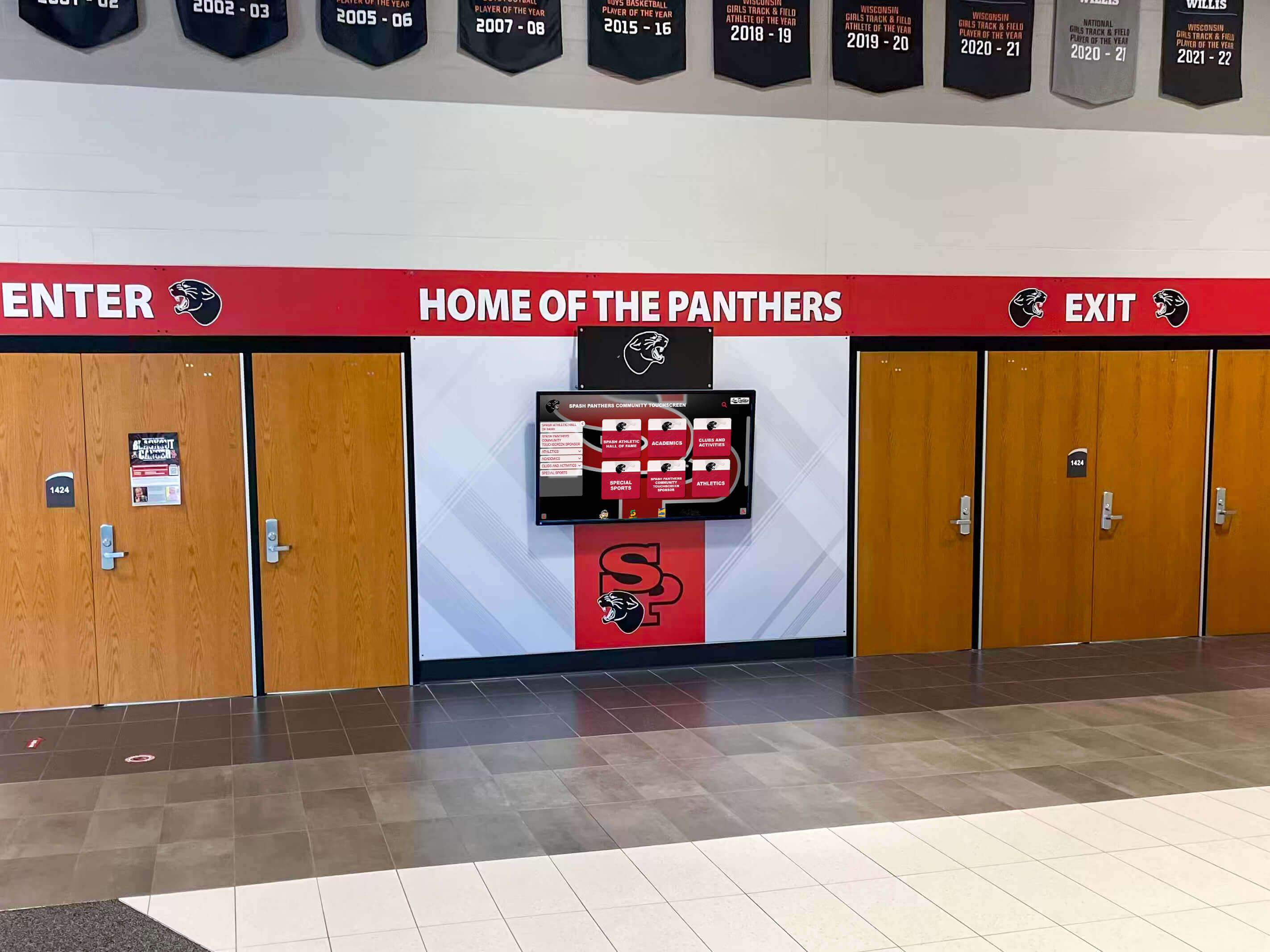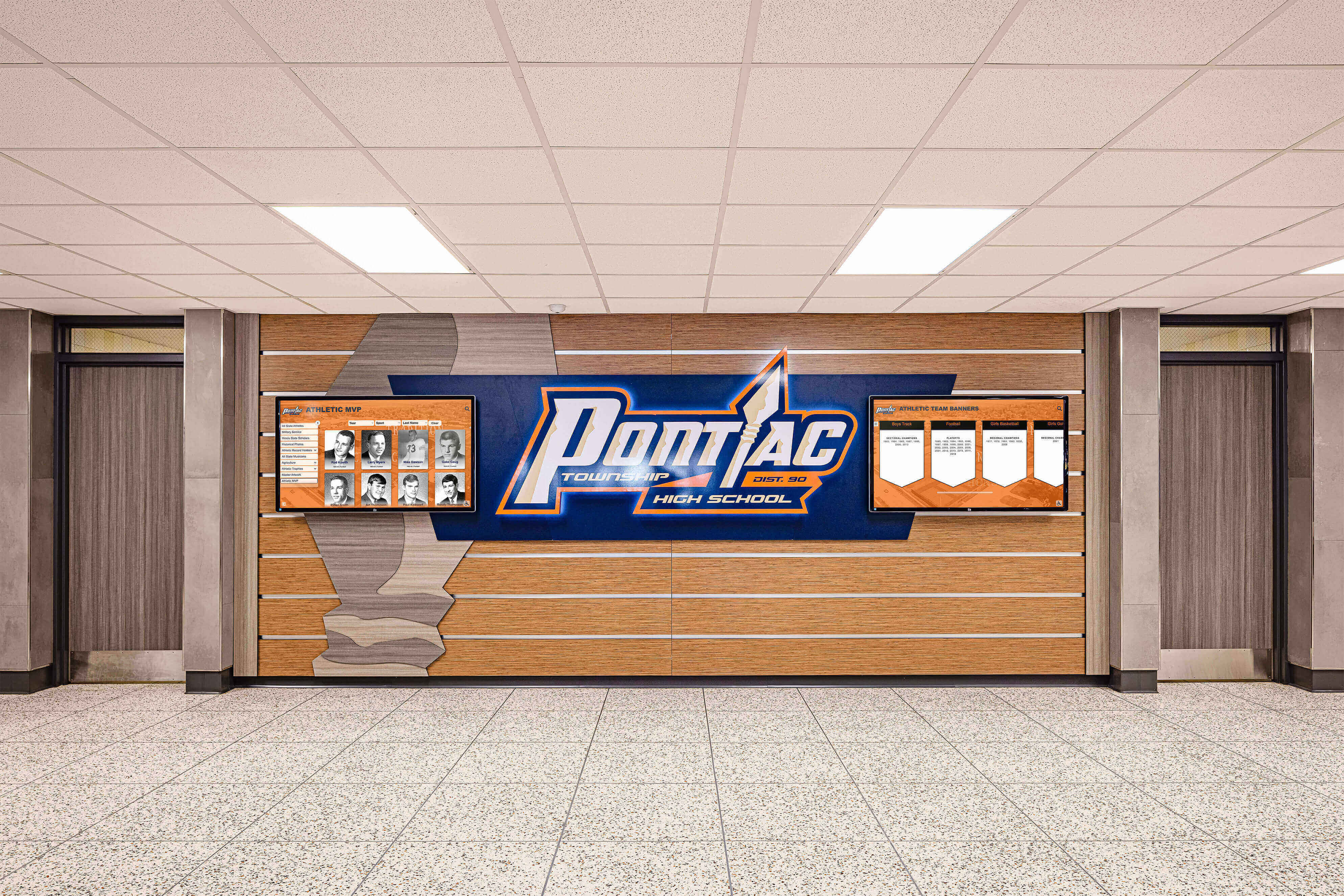Strong communities don’t emerge by accident—they’re deliberately cultivated through intentional strategies that create authentic connections, foster belonging, and build shared identity. Whether you’re leading a school, managing an organization, guiding a civic group, or overseeing any community-focused institution, the challenge remains consistent: how do you transform a collection of individuals into a thriving community where members feel valued, connected, and invested in collective success?
The answer lies in implementing innovative approaches that leverage both time-tested community-building principles and modern technology to create meaningful connections that endure. From comprehensive recognition programs that celebrate diverse contributions to digital platforms that extend community beyond physical boundaries, effective community building requires multifaceted strategies addressing the fundamental human needs for belonging, recognition, and purpose.
This comprehensive guide explores 25+ innovative ways to build a sense of community in 2025, from foundational recognition strategies to cutting-edge digital engagement tools. Whether establishing community initiatives from scratch or revitalizing existing programs that have grown stale, these evidence-based approaches help organizations build the vibrant communities their members deserve.
Understanding the Foundation of Strong Communities
Before implementing specific strategies, understanding what truly creates community helps ensure efforts address root causes rather than superficial symptoms.
The Psychology Behind Community Connection
Strong communities satisfy fundamental human psychological needs that drive belonging and engagement.
Belonging and Acceptance
Humans possess innate needs to belong to groups where they feel accepted and valued. Communities that create inclusive environments where diverse individuals find welcoming spaces establish foundations for connection that superficial programming cannot achieve. Community strengthens when members can authentically answer “yes” to the question: “Do I truly belong here?”
Recognition and Validation
Acknowledging individual and collective contributions validates effort and reinforces that participation matters. When community members see their contributions recognized—whether leadership, service, creativity, or consistent support—they develop investment in collective success. Recognition communicates that the community notices and values what members accomplish and contribute.

Shared Purpose and Identity
Communities thrive when united by common values, goals, or missions larger than individual interests. Shared purpose creates meaning that transcends transactional participation, transforming communities from convenient associations into meaningful sources of identity and belonging. Clear articulation of shared purpose helps members understand how their individual participation advances collective goals.
Tradition and Continuity
Connections to community history and tradition create continuity across generations and circumstances. When current members understand they’re part of something larger than themselves—a legacy spanning years or decades—community identification deepens. Historical awareness helps members see themselves as temporary stewards of ongoing community stories rather than isolated participants in momentary associations.
Elements That Undermine Community
Understanding what damages community helps organizations avoid counterproductive practices while pursuing positive initiatives.
Community-Weakening Factors:
- Exclusivity and Favoritism: When recognition, opportunity, or belonging feel available only to select groups, excluded members develop resentment rather than connection
- Insufficient Communication: Poor information flow creates confusion, rumors, and disconnection as members feel uninformed about community activities and decisions
- Lack of Meaningful Engagement: Superficial activities that don’t address genuine member interests or needs fail to create authentic connections
- Inconsistent Values: When stated values diverge from actual practices, cynicism replaces pride as members recognize hypocrisy between words and actions
- Absence of Voice: When members have no meaningful input into community direction or culture, they feel like passive recipients rather than active participants, diminishing investment and connection
Recognition Programs That Build Lasting Community Bonds
Recognition programs represent one of the most powerful tools for building community by validating contribution, communicating values, and creating aspirational examples for current and future members.
Comprehensive Recognition Categories
Effective community building recognizes diverse contributions rather than limiting acknowledgment to narrow achievement types.
Achievement Recognition
Beyond traditional accomplishments, recognize members who demonstrate excellence in their roles or responsibilities, show significant growth or improvement in skills and contributions, complete important milestones or program requirements, earn external honors or recognition that reflect well on community, and participate consistently over extended time periods.
Service and Contribution Recognition
Celebrate members who volunteer time and expertise to community initiatives, mentor or support other community members, lead programs or committees advancing community goals, demonstrate consistent attendance and participation, and contribute behind-the-scenes work that makes visible success possible.

Character and Values Recognition
Honor individuals exemplifying community values through their actions, demonstrating kindness and support to fellow members, overcoming personal challenges with perseverance, showing integrity in difficult circumstances, and modeling positive behavior that strengthens community culture.
Innovation and Creativity Recognition
Acknowledge members who introduce new ideas improving community experience, solve problems through creative approaches, initiate programs addressing previously unmet needs, adapt traditions in ways that maintain meaning while staying relevant, and inspire others through creative contributions.
Comprehensive recognition programs that honor diverse contributions ensure all members see pathways to acknowledgment, strengthening everyone’s sense of belonging and investment in community success.
Modern Digital Recognition Solutions
Traditional recognition methods face inherent limitations in space, accessibility, and engagement. Digital recognition platforms transform how communities honor members while extending impact beyond physical locations.
Interactive Recognition Displays
Modern touchscreen systems create engaging experiences where community members can explore achievements through intuitive navigation, search functionality finding specific individuals instantly, rich multimedia integration including photos and videos, unlimited capacity recognizing contributions without space constraints, and easy content updates adding new recognition in real-time.
Solutions like digital recognition displays enable comprehensive documentation of community contributions while creating interactive experiences that resonate with technology-native members.
Web-Accessible Recognition Platforms
Online recognition extends acknowledgment to members who cannot physically visit community facilities, reaching families and dispersed members worldwide. Effective online platforms include searchable databases enabling quick location of specific individuals, filtered browsing by contribution type or time period, mobile-responsive design ensuring accessibility on any device, social sharing capabilities allowing celebration across networks, and permanent archives preserving recognition indefinitely.
Recognition Event Integration
Digital platforms complement rather than replace in-person recognition ceremonies by providing slideshow displays during recognition events, enabling virtual participation for remote attendees, preserving ceremony documentation for future viewing, and extending recognition impact beyond brief ceremony moments through permanent documentation accessible anytime.
Creating Inclusive Traditions That Connect Generations
Strong traditions create continuity, shared identity, and memorable experiences that define community culture across time.
Establishing Meaningful Annual Events
Consistent annual events become anticipated traditions that create shared memories and reinforce community identity.
Tradition-Building Events:
Homecoming or Reunion Celebrations
Annual gatherings that unite current members with those who came before create intergenerational connections strengthening community bonds. Beyond social gatherings, incorporate member recognition, decade-based cohort activities, and programs connecting past and present. Well-designed homecoming recognition programs celebrate community history while engaging current members.

Community Spirit Weeks or Days
Themed celebration periods with daily activities, competitions between groups, and culminating events create fun, inclusive participation opportunities. Successful spirit events balance traditions that continue annually with fresh elements that maintain excitement and relevance while avoiding staleness.
Recognition and Awards Ceremonies
Formal events specifically celebrating member achievements and contributions create prestigious acknowledgment experiences. Include diverse award categories ensuring many members receive recognition for various contributions, involve honorees in ceremony planning when appropriate, and create symbolic traditions like pins, certificates, or recognition items that make acknowledgment tangible.
Welcome Programs for New Members
First impressions significantly impact how new members connect with communities. Comprehensive orientation programs featuring community tours, tradition introductions, peer mentoring, and inclusive social activities help newcomers feel immediately welcomed rather than spending months finding their place.
Service and Impact Events
Community service projects or impact initiatives bring members together around shared purpose beyond internal focus. Collaborative work toward external goals creates bonding experiences while demonstrating community values through action rather than just words.
Sustaining Traditions While Allowing Evolution
Successful traditions balance consistency with gradual evolution ensuring they remain relevant across changing contexts and member populations.
Tradition Management Principles:
- Core Elements Consistency: Maintain defining characteristics that make traditions recognizable across years
- Flexibility for Enhancement: Allow incremental improvements and additions that enhance traditions without fundamentally changing their essence
- Member Voice in Evolution: Include member input about tradition modifications ensuring changes resonate with current community participants
- Documentation and Knowledge Transfer: Create systems ensuring knowledge about traditions passes to new members and leaders
- Periodic Assessment: Regularly evaluate whether traditions still serve intended purposes or have become hollow rituals requiring refreshment
Leveraging Modern Technology for Community Building
Digital technology offers innovative approaches to connection, communication, and community building that enhance traditional strategies while creating new possibilities.
Digital Community Platforms and Social Media
Strategic use of digital platforms amplifies connection and celebration while engaging community members beyond physical boundaries.
Platform-Specific Strategies
Different social platforms serve different community purposes through their unique formats and member demographics. Instagram excels at visual community celebration through photo posts with detailed captions and story highlights preserving content beyond 24-hour limits. Facebook effectively reaches broader audiences including families through detailed posts with photo albums and community group discussions. LinkedIn provides professional networking opportunities connecting members across industries and career stages.
Social Media Community Best Practices
Effective social presence maintains consistency through regular posting schedules keeping community visible, authentic voice that feels genuine rather than corporate, member permission ensuring comfort with public sharing, varied content types preventing feed monotony, and engagement encouragement through comments and shares building celebration culture.

Member-Generated Content Programs
Empowering members to contribute content creates authentic peer-to-peer connection that resonates more deeply than leadership-created messaging. Member content creators can share peer contributions and achievements, capture community moments through photography, craft stories about fellow members, and coordinate recognition campaigns celebrating diverse contributions.
Virtual Events and Hybrid Experiences
Combining in-person and virtual participation broadens community reach while accommodating diverse member circumstances and preferences.
Effective Virtual Event Formats
Technology enables live-streamed celebrations allowing remote viewing with chat engagement, webinars and presentations featuring compelling speakers, virtual tours of facilities or spaces, online workshops providing practical skills or knowledge, and digital recognition ceremonies honoring members regardless of location.
Modern virtual hall of fame platforms enable community recognition accessible to anyone, anywhere, extending connection beyond geographic constraints.
Hybrid Event Design Considerations
Successful hybrid experiences require technology ensuring remote participants feel included not secondary, interactive elements engaging both in-person and virtual attendees, recording availability for those unable to attend live, clear communication about participation options and requirements, and technical support for less tech-comfortable participants.
Online Communities and Digital Gathering Spaces
Beyond event-specific technology, permanent digital spaces create ongoing connection opportunities.
Community Platform Features
Effective online communities provide discussion forums or groups enabling conversation, member directories facilitating connection and networking, resource libraries sharing valuable content, event calendars maintaining awareness of activities, and messaging systems enabling direct member-to-member communication.
Building Active Online Engagement
Digital communities thrive when leaders seed discussion with interesting topics and questions, recognize active participants publicly, respond promptly to posts and questions, moderate discussions maintaining respectful tone, and integrate online with in-person activities creating seamless community experience.
Creating Welcoming and Inclusive Communities
Community thrives when all members feel valued and included regardless of background, identity, or circumstance.
Diverse Representation and Voice
True inclusion requires intentional effort ensuring all community segments see themselves represented and heard.
Leadership and Decision-Making Inclusion
Work intentionally to ensure leadership includes diverse representation across demographics and backgrounds, committee composition reflects community diversity, decision-making processes include authentic member voice, advisory structures provide influence opportunities beyond symbolic involvement, and distributed leadership creates multiple pathways for member impact.
Multiple Participation Pathways
Different members engage differently, and inclusive communities offer varied involvement options: large-scale events bringing broad community together, small group gatherings enabling deeper connection, virtual participation accommodating various circumstances, flexible time commitments respecting different availability, and role diversity from leadership positions to support functions.

Proactive Outreach to Underengaged Segments
Rather than waiting for particular groups to engage, proactive communities reach out through consultation with individuals who have insight into underengaged populations, partnership with organizations serving specific communities, targeted communication using preferred channels and languages, accommodation removal addressing barriers preventing participation, and explicit welcome messages demonstrating genuine desire for diverse engagement.
Accessibility and Accommodation
Removing barriers to participation strengthens entire communities by enabling fuller involvement.
Physical Accessibility
Ensure event venues comply with accessibility standards accommodating all abilities, provide transportation assistance for those facing mobility challenges, offer childcare enabling parent participation, schedule events at times accommodating diverse work schedules, and utilize multiple location options reducing travel burdens.
Digital Accessibility
Make online platforms compliant with web accessibility guidelines, provide multiple communication channels reaching different preferences, offer technology training and support for less tech-comfortable members, optimize mobile access for those without computers, and create multilingual content for linguistically diverse communities.
Financial Accessibility
Maintain free and low-cost participation options alongside fundraising events, establish assistance programs for those facing financial barriers, communicate transparently about any costs associated with participation, ensure volunteer opportunities serve as alternatives to financial contribution, and recognize that not all participation requires monetary investment.
Storytelling and Shared History as Community Glue
Communities bond through shared narratives that create collective identity and belonging. Strategic storytelling serves as powerful community-building tool.
Preserving and Sharing Community History
Historical narratives connect current members to community legacy while honoring those who came before.
Creating Accessible Historical Archives
Digital platforms for preserving history make the past accessible through digitized photographs documenting community evolution, oral history recordings from long-time members, historical documents and artifacts preserved digitally, timeline visualizations showing key milestones, and searchable databases enabling easy exploration of archives.
Solutions for digitizing community records help preserve these important materials for current and future generations.
Intergenerational Connection Programming
Bringing different generations together strengthens community bonds through multi-generational recognition programs honoring family legacies, mentorship initiatives connecting experienced members with newcomers, historical documentation projects involving newer members interviewing veterans, reunion events structured to facilitate cross-generational conversation, and legacy programs enabling long-time members to formalize their impact.
Amplifying Member Stories and Achievements
Contemporary storytelling demonstrates community vitality and inspires participation.
Profile Series Spotlighting Members
Regular features highlighting individual community members create engagement through “Member Spotlight” profiles in newsletters and social media, video interview series exploring diverse member experiences, achievement announcements celebrating milestones, “Day in the Life” content showing varied community participation, and success stories demonstrating long-term community impact.

User-Generated Content Initiatives
Encouraging members to contribute content increases engagement and ownership through photo contests with themes relevant to community identity, story submission opportunities for publications or displays, social media campaigns with branded hashtags, memory-sharing projects collecting favorite experiences, and collaborative timelines where members add personal milestones.
Historical Anniversary Celebrations
Milestone anniversaries provide natural opportunities to connect past and present through retrospective displays showing community evolution, reunion of significant cohorts or groups, documentary projects capturing community history, recognition of founding or long-time members, and forward-looking visioning connecting history to future.
Engaging Specific Community Segments Effectively
Different community segments require tailored engagement approaches respecting their unique characteristics and preferences.
Young Adult and Recent Member Engagement
Younger community members and recent additions need engagement strategies matching their lifestyles and communication preferences.
Digital-First Communication
Mobile-optimized platforms and content accessible on smartphones, social media presence on platforms younger demographics actually use, text messaging for time-sensitive announcements and reminders, app-based communities facilitating ongoing connection, and interactive digital experiences rather than passive content consumption.
Flexible, Low-Commitment Participation Options
Micro-engagement opportunities requiring minimal time investment, virtual events accommodating busy schedules and geographic mobility, project-based involvement with clear beginning and ending points, peer-led initiatives rather than traditional hierarchical programs, and social events combining fun with connection.
Career and Personal Development Value
Networking events connecting members across industries and generations, mentorship programs pairing emerging members with experienced leaders, professional recognition programs highlighting career achievements, skills workshops and educational programming providing tangible value, and resource access available to community members.
Senior and Long-Time Member Engagement
Experienced community members bring institutional knowledge, networks, and often more available time to contribute.
Honoring Legacy and Contributions
Lifetime achievement recognition programs acknowledging sustained involvement, legacy initiatives enabling documentation of member impact, historical preservation projects tapping into personal memory and experience, naming opportunities for facilities or programs, and emeritus positions recognizing continued value of long-time contributors.
Accessible Participation Formats
In-person events at convenient times and accessible locations, multiple communication channels including print alongside digital, technology assistance for those less digitally comfortable, transportation support for members with mobility limitations, and hybrid event options accommodating different participation preferences.
Mentorship and Wisdom-Sharing Opportunities
Formal mentorship programs pairing experienced members with newcomers, advisory roles leveraging institutional knowledge and perspective, speaking opportunities at events and programs, oral history documentation preserving their experiences, and committee positions where perspective and judgment add value.
Family Engagement Strategies
Communities supporting families need strategies recognizing that parents and children have different needs and participation patterns.
Multi-Generational Events and Activities
Family-friendly programs welcoming all ages, childcare provision enabling parent participation, activities designed for joint family involvement, recognition programs honoring entire families, and facilities accommodating varied ages and abilities.
Convenient Timing and Location
Weekend and evening events accommodating work schedules, calendar planning respecting family commitments, multiple short-duration options versus single long events, virtual participation options for busy families, and local venues minimizing travel requirements.
Building Community Through Shared Purpose and Service
Communities strengthen when united around meaningful goals beyond internal focus.
Community Service and Impact Initiatives
Collaborative work toward external goals creates bonding experiences while demonstrating community values through action.
Service Program Elements
Organized service projects and volunteer events, partnerships with local nonprofits and organizations, individual volunteer tracking and recognition, impact quantification and communication, and reflection components connecting service to community values.
Solutions for recognizing community service contributions help honor members who strengthen bonds through meaningful impact.
Service Recognition Programs
Service hour leader celebrations, community impact documentation and communication, volunteer awards and special recognition, permanent displays honoring service contributors, and testimonials from beneficiaries about member impact.
Cause-Based Community Initiatives
Communities unite around shared causes or goals through fundraising campaigns supporting causes aligned with community values, awareness initiatives addressing important issues, advocacy efforts advancing shared priorities, sustainability programs demonstrating environmental commitment, and cultural preservation projects maintaining community heritage.
Initiative Success Factors
Effective cause-based initiatives demonstrate authentic connection to community values, involve members meaningfully in planning and execution, communicate impact clearly showing results of participation, celebrate milestones and achievements publicly, and sustain momentum through ongoing engagement rather than one-time efforts.

Communication Strategies That Strengthen Community
How communities communicate significantly influences connection and engagement.
Multi-Channel Communication Approaches
Maximize reach and engagement through diverse communication channels.
Internal Communication Channels
Regular newsletters highlighting achievements and upcoming events, morning or meeting announcements celebrating recent accomplishments, digital displays throughout facilities with rotating content, email updates maintaining regular touchpoints, mobile apps providing convenient access to community resources, and messaging systems enabling member-to-member communication.
External Communication Channels
Websites featuring community highlights and news, social media posts across multiple platforms, local media relationships and coverage, community organization partnerships, and public communications reaching broader audiences.
Targeted Communication
Personalize messaging to relevant audiences through direct notification to specifically affected members, announcement to relevant sub-groups or segments, sharing with partner organizations as appropriate, stakeholder communication when decisions or changes affect them, and prospective member outreach during recruitment periods.
Storytelling and Content Strategy
Strategic storytelling creates emotional connection that data alone cannot achieve.
Content Pillars
Effective community content includes achievement celebrations across all categories, behind-the-scenes glimpses of community life, member spotlights with personal stories, event promotion and coverage, historical content connecting past to present, and community impact demonstration showing collective accomplishment.
Engagement Tactics
Interactive content creates conversation through polls and questions inviting participation, contests and challenges encouraging involvement, member takeovers letting individuals control channels, user-generated content showcasing member contributions, and live coverage of major events creating real-time shared experience.
Measuring Community Strength and Engagement
Effective community building requires assessment and continuous improvement based on evidence about what works.
Quantitative Community Metrics
Data-driven evaluation provides objective measures of community health and engagement.
Participation Indicators
Track total members engaging regularly and percentage of community participating, event attendance rates and trends over time, volunteer sign-up and sustained involvement, digital platform usage statistics, communication open and engagement rates, and program enrollment showing interest levels.
Demographic Distribution Analysis
Monitor participation rates across different community segments, comparison of engagement patterns between demographic groups, geographic distribution of active versus inactive members, representation in leadership and visible roles, and new member acquisition and retention rates.
Behavioral Correlation
Assess whether strong community associates with desired outcomes through member satisfaction and well-being indicators, organizational goal achievement rates, sustainability of programs and initiatives, resource contribution levels, and community advocacy and word-of-mouth recommendation.
Qualitative Assessment Methods
Non-numerical data provides important context and insight beyond statistics.
Member Feedback Collection
Gather perspectives through regular surveys assessing satisfaction and gathering suggestions, focus groups exploring experiences and perceptions in depth, exit conversations with departing members understanding disengagement, suggestion systems and open feedback channels, and one-on-one conversations during events and activities.
Observation and Anecdotal Evidence
Notice energy and enthusiasm level at community gatherings, unsolicited positive feedback and testimonials, spontaneous member-initiated activities and connections, sustained involvement patterns over time, and stories of meaningful impact from engagement initiatives.
Benchmarking Against Similar Communities
Compare with peer organizations facing similar contexts, identify industry standards and best practices, recognize exceptional practices worth emulating, and learn from both successes and failures in comparable settings.
Creating Sustainable Community Programs
Long-term community strength requires sustainable systems that outlast individual leaders and temporary enthusiasms.
Resource Allocation and Infrastructure
Effective community building requires appropriate investment of time, funding, and organizational capacity.
Staffing and Leadership
Dedicated staff or volunteer leadership for community initiatives, clear accountability and responsibility for engagement outcomes, professional development ensuring skill development, succession planning preventing dependence on single individuals, and recognition and support for community leaders preventing burnout.
Budget Considerations
Line-item budget allocations for community activities, technology investments in platforms enabling scaled engagement, event funding supporting diverse participation opportunities, communication tool subscriptions for professional implementation, and contingency funding for responsive opportunistic initiatives.
Modern digital recognition solutions provide sustainable platforms for community engagement that scale efficiently while delivering meaningful impact.
Physical Infrastructure
Gathering spaces suitable for events and activities, recognition displays honoring member contributions, technology infrastructure supporting digital engagement, accessible facilities welcoming all community members, and storage for historical materials and community archives.
Governance and Member Input
Community thrives when members influence direction and decisions.
Participatory Structures
Advisory councils with genuine authority and influence, member representation on boards and leadership committees, open processes and transparent decision-making, regular opportunities for member input on strategic questions, and demonstrable responsiveness to community feedback and concerns.
Inclusive Leadership Development
Intentional cultivation of diverse leadership pipeline, mentorship and training for emerging leaders, rotational leadership preventing stagnation and burnout, recognition pathways from participation to leadership roles, and barrier removal that excludes potential leaders from underrepresented groups.
Continuous Improvement and Adaptation
Successful communities evolve with changing member needs and contexts.
Regular Program Assessment
Annual reviews evaluating community initiative effectiveness, willingness to discontinue ineffective programs freeing resources, experimentation with new approaches and formats, learning from both successes and failures, and benchmarking against evolving best practices.
Responsive Adaptation to Change
Monitor demographic shifts and adjust strategies accordingly, adopt emerging technologies and platforms as appropriate, respond to community feedback with visible changes, remain relevant during leadership transitions and organizational evolution, and balance tradition with innovation and contemporary needs.

Future Trends in Community Building
Understanding emerging trends helps communities make forward-looking investments while anticipating how connection will evolve.
Artificial Intelligence and Personalization
AI technologies will personalize community experiences while providing deeper insights into engagement patterns.
Intelligent community systems will offer personalized recommendation engines suggesting relevant opportunities for individual members, automated communication tailoring messages to member preferences and behaviors, predictive analytics identifying at-risk members who would benefit from outreach, sentiment analysis measuring emotional responses to different approaches, and natural language processing enabling conversational interaction with community resources.
Enhanced Digital and Hybrid Experiences
Technology will create new dimensions of community beyond traditional physical gatherings.
Extended reality community experiences will include augmented reality features overlaying digital information on physical spaces, virtual gathering spaces enabling rich interaction regardless of location, immersive storytelling using 3D environments and experiences, gamified engagement using game mechanics to increase participation, and holographic presence creating futuristic connection experiences.
Blockchain and Digital Credentials
Distributed technology will create new possibilities for community recognition and membership.
Blockchain applications will provide verifiable digital credentials documenting community participation and achievement, token-based systems rewarding engagement and contribution, decentralized governance enabling distributed decision-making, smart contracts automating community agreements and processes, and permanent records preserving community history immutably.
Implementing Your Community Building Strategy
Communities ready to enhance connection should follow systematic approaches ensuring effective launch and sustainable operations.
Community Building Planning Framework
Strategic planning ensures initiatives align with organizational goals while meeting member needs.
Phase 1: Assessment and Planning
Begin by evaluating current community strength and identifying gaps, surveying members about priorities and preferences, defining community philosophy and values to cultivate, establishing clear goals and success metrics, and developing preliminary budgets and resource requirements.
Phase 2: Initiative Design
Create community structure including engagement programs and activities, recognition approaches and criteria, communication strategies and channels, event calendars and schedules, and technology platform requirements if implementing digital solutions.
Phase 3: Implementation Preparation
Prepare for launch through staff and volunteer training on community initiatives, content development creating initial programs or materials, communication campaigns promoting new approaches, pilot testing with selected member groups, and adjustment based on pilot feedback before full launch.
Phase 4: Launch and Operations
Initiate community programs through ceremonial launches generating awareness and excitement, systematic engagement cycles maintaining ongoing activity, content management workflows sustaining fresh programming, member communication maintaining visibility and participation, and continuous monitoring and improvement based on data and feedback.
Choosing Community Technology Solutions
Communities implementing digital platforms should evaluate solutions carefully ensuring alignment with needs and capabilities.
Essential Platform Capabilities
Comprehensive community systems should offer intuitive content management requiring no technical expertise, flexible display and engagement options accommodating various activities, search and navigation enabling easy discovery, multimedia support for rich storytelling, analytics and reporting demonstrating value, mobile accessibility extending reach, and integration capabilities connecting with existing systems.
Solutions like Rocket Alumni Solutions provide purpose-built community platforms designed specifically for organizations building lasting connections, offering functionality that generic tools cannot match while providing dedicated support ensuring long-term success.
Implementation Support Requirements
Evaluate vendor support including comprehensive training for administrators and leaders, technical support with responsive assistance, regular software updates adding features and improvements, content development assistance helping launch programs strongly, hardware maintenance services for physical components, and long-term partnership approaches viewing implementation as beginning rather than end of relationship.
Conclusion: Building Communities That Last
The most innovative ways to build a sense of community combine timeless principles of human connection with modern tools and approaches that extend reach, deepen engagement, and create lasting bonds. Truly strong communities emerge when organizations deliberately implement comprehensive strategies addressing recognition, inclusion, tradition, communication, service, and shared purpose while leveraging technology to amplify impact.
Communities that invest strategically in connection reap substantial benefits: improved member satisfaction and well-being, stronger organizational resilience and sustainability, enhanced achievement across collective goals, increased support and resource contribution, better recruitment and retention, more engaged member networks, and most importantly, individuals who experience genuine belonging during their participation that influences them throughout life.
Core Principles for Community Building Success:
- Recognize diverse contributions ensuring all members see pathways to acknowledgment and belonging
- Implement both traditional and innovative approaches leveraging proven methods and modern technology
- Maintain authenticity ensuring initiatives reflect genuine community values rather than imposed programs
- Create visibility making recognition and celebration impossible to miss through strategic communication
- Sustain consistency maintaining community programs across time rather than sporadic implementation
- Monitor inclusion ensuring all segments feel welcomed and valued
- Measure effectiveness tracking community strength and continuously improving based on evidence
- Involve members empowering authentic voice and leadership in community direction
- Commit long-term viewing community building as ongoing priority rather than temporary initiative
- Adapt thoughtfully evolving with changing member needs while maintaining core identity
Ready to transform your community? Modern solutions like Rocket Alumni Solutions provide comprehensive platforms combining recognition, storytelling, and engagement tools helping organizations create thriving communities where every member feels valued, connected, and invested in collective success.




































